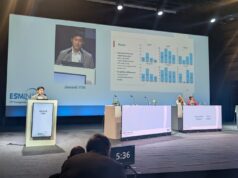 Women may be less likely than men to be sent to a comprehensive, or “Level 1”, stroke centre for emergent large vessel occlusion (ELVO) ischaemic stroke. This gender disparity was highlighted in a study presented at the Society of NeuroInterventional Surgery’s 18th annual meeting (SNIS; July 26–29 2021, Colorado Springs, USA and virtual).
Women may be less likely than men to be sent to a comprehensive, or “Level 1”, stroke centre for emergent large vessel occlusion (ELVO) ischaemic stroke. This gender disparity was highlighted in a study presented at the Society of NeuroInterventional Surgery’s 18th annual meeting (SNIS; July 26–29 2021, Colorado Springs, USA and virtual).
The study, entitled “Women with Large Vessel Occlusion Acute Ischemic Stroke Are Less Likely to Be Routed to Comprehensive Stroke Centers,” reviewed one-and-a-half years of data from 10 stroke centres to see which patients experiencing an ELVO were routed directly to comprehensive stroke centres for a thrombectomy procedure.
Like Level 1 trauma centres, Level 1 stroke centres have the most comprehensive services, including a specially trained neurointerventional care team that is available to treat strokes 24/7. By contrast, primary stroke centres may not have round-the-clock stroke surgery capability, may not have a specialised intensive care unit for stroke patients and may need to transfer the most complex patients to Level 1 stroke centres.
Of 490 ELVO stroke patients included in this study, women made up nearly half (46%) of the total. Stroke severity, travel distances to comprehensive stroke centres and comorbidities were similar between women and men, although women were older (median=73 vs. 65 years). Whereas nearly 90% of male patients with ELVO were routed directly to comprehensive stroke centres, significantly lower rates were observed in women. After taking into account differences in stroke type, age, travel distance and other relevant factors, the study’s authors concluded that women with ELVO were approximately 11% less likely to be taken to a comprehensive stroke centre compared to men.
“It is essential that all patients with ELVO ischaemic strokes receive urgent care for this condition in the most appropriate setting,” said Sunil Sheth, lead author on the study and assistant professor of neurology at McGovern Medical School at the University of Texas Health Science Center at Houston (Houston, USA). “At state and regional levels around the nation, we have built prehospital routing programmes to ensure that patients with this type of stroke are taken directly to the appropriate hospitals. This study shows that we need to work harder to bridge the gender healthcare gap and ensure that all patients who need stroke surgery are routed to the right hospital for the best chance of survival, recovery and independence.”










